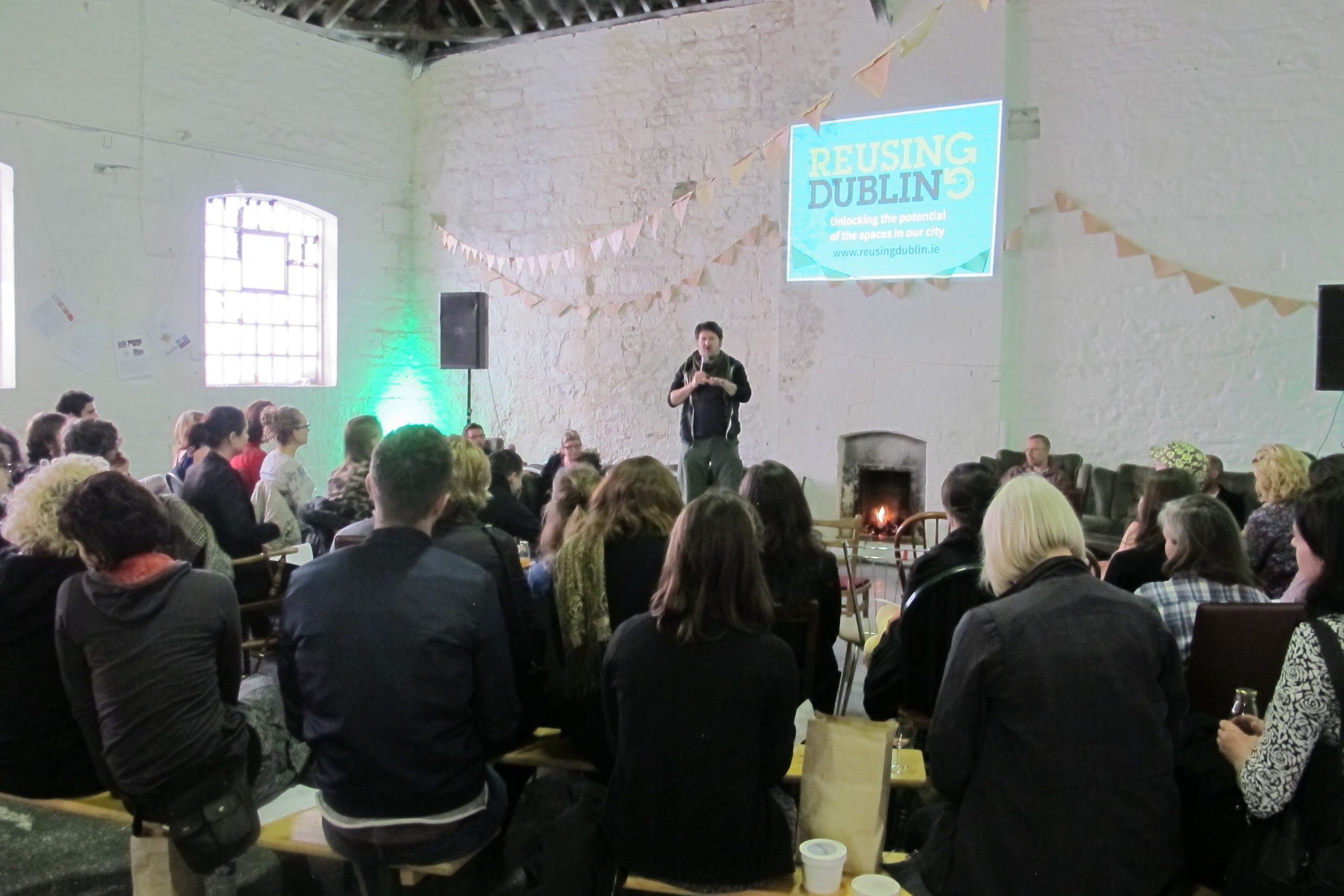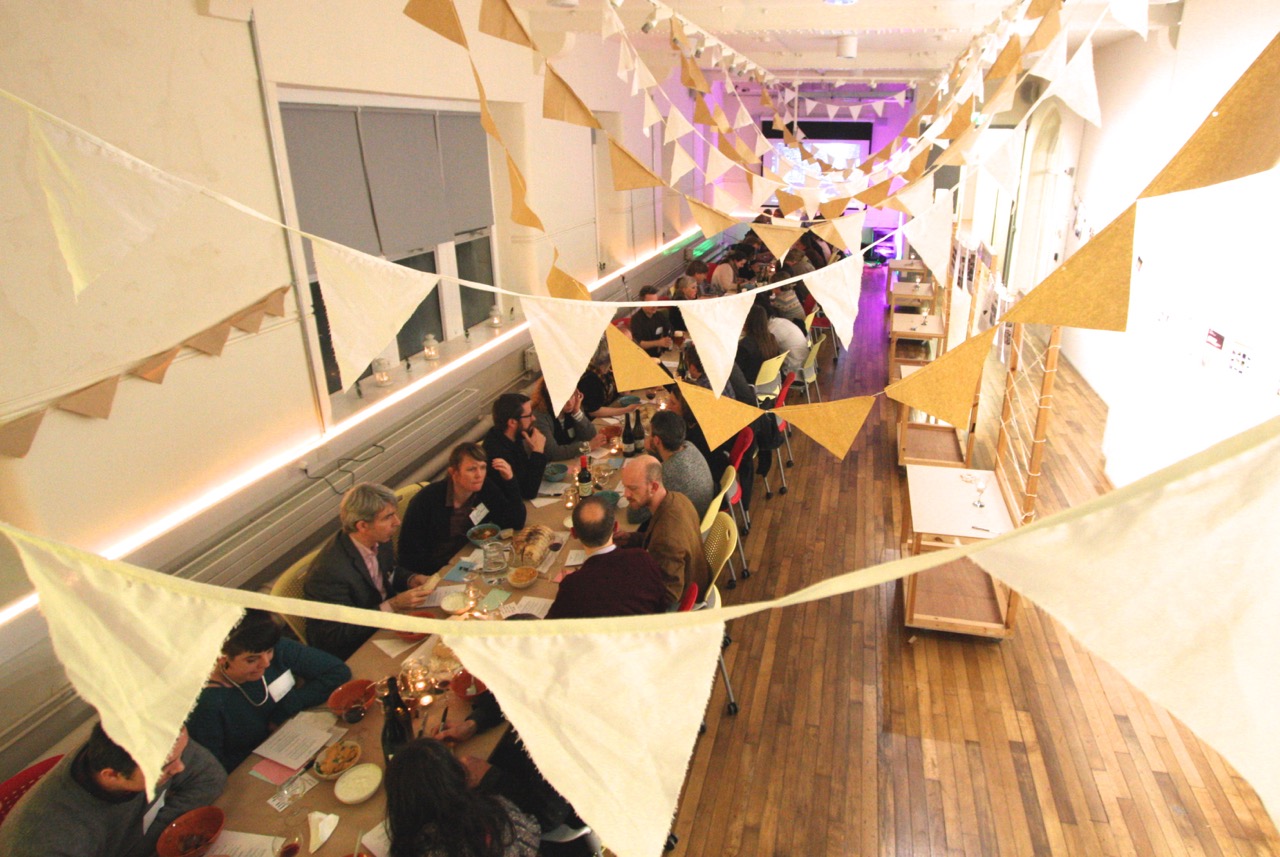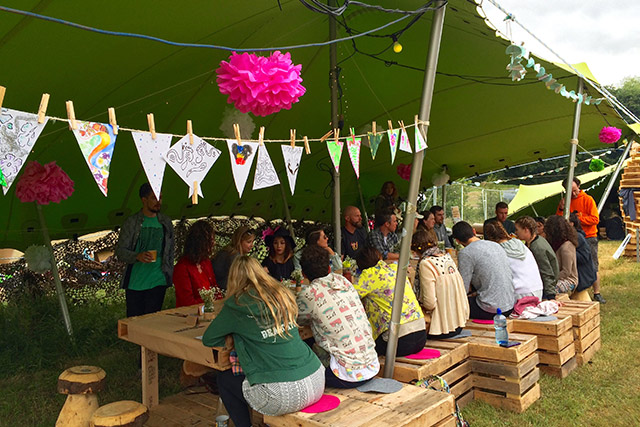14 Mar Celebrating Our Irish Roots
 This March, we sat down with Marisa Denker, CEO & Co-Founder of Connect the Dots to talk about Connect the Dots’ Irish roots this St. Patrick’s Day! We get asked about our “Irish Side” pretty regularly, and there’s a great story behind how CTD got started in Dublin and how it grew here in Philadelphia.
This March, we sat down with Marisa Denker, CEO & Co-Founder of Connect the Dots to talk about Connect the Dots’ Irish roots this St. Patrick’s Day! We get asked about our “Irish Side” pretty regularly, and there’s a great story behind how CTD got started in Dublin and how it grew here in Philadelphia.
Why did you start Connect the Dots?
Connect the Dots started by accident. It was never meant to be a business originally; rather, it began as my Fulbright-Masters project in Dublin, Ireland. At first, it was an experimental project focused on reimagining ways to bring diverse voices together to co-create responses to complex urban challenges.
I had seen in Dublin, like in many other cities and places, gaps and siloes between stakeholders that were preventing inclusive, meaningful progress. Traditional engagement processes just didn’t seem to be working; key stakeholders weren’t engaging effectively with communities or with each other. My research partner and I wanted to change that.
How did Connect the Dots begin?
Naomi (my soon to be co-founder) and I began to reimagine what stakeholder engagement could mean. We worked to think outside the box, and began experimenting with new ways to reach people, to create safe spaces, to prioritize new voices, to gather insights, and to enable collaboration.
 We designed our first event as a long table communal dinner – focused on the city challenge of underused vacant spaces. We had connected with stakeholders beforehand, and managed to bring together leaders of Dublin City Council alongside artists, squatters, architects, community activists, homeless representatives, and more. We had listened ahead of time to what participants wanted from the event, so shaped every decision related to the content and format of the event based on these insights. We even purposely chose food that people would have to cross arms to share and food that would crumble – to drive connection and flatten the hierarchy at the table. At the end of that event, everyone asked when the next event would be…so we made up a date for the next month! Responding to demand, soon we had done 7 events in a row, and had seen measurable impact on the topic.
We designed our first event as a long table communal dinner – focused on the city challenge of underused vacant spaces. We had connected with stakeholders beforehand, and managed to bring together leaders of Dublin City Council alongside artists, squatters, architects, community activists, homeless representatives, and more. We had listened ahead of time to what participants wanted from the event, so shaped every decision related to the content and format of the event based on these insights. We even purposely chose food that people would have to cross arms to share and food that would crumble – to drive connection and flatten the hierarchy at the table. At the end of that event, everyone asked when the next event would be…so we made up a date for the next month! Responding to demand, soon we had done 7 events in a row, and had seen measurable impact on the topic.
Then, Dublin City Council approached us and asked us to help with their Reimagine College Green engagement process to pedestrianize the area outside Trinity College. After that, word spread and soon we were doing events across the county – for clients like the National Transport Authority and even the equivalent of the Congress.
How has it grown stateside?
I stayed for years to grow Connect the Dots in Ireland, but I ultimately started deeply missing the city of Philadelphia. I had fallen in love with it during my undergrad at Penn and I was ultimately drawn back to it in 2019.
I had never launched a business intentionally as the Irish one had just accidentally become one – so I just hit the ground running, meeting and connecting with like-minded and inspirational people across the city. Taking my learnings about collaboration, I first worked to build and grow partnerships – and that’s what we still focus on to this day.
 We grew fairly quickly – we’re a small but mighty team – and soon found ourselves working with clients from Comcast to the City of Philadelphia to SEPTA to the Enterprise Center CDC and many more. We now work with local partners across the Mid-Atlantic region (and beyond) to craft inclusive, equitable engagement processes that foster participation and reimagine the future of our places – particularly as part of transportation/planning/public realm/economic development projects.
We grew fairly quickly – we’re a small but mighty team – and soon found ourselves working with clients from Comcast to the City of Philadelphia to SEPTA to the Enterprise Center CDC and many more. We now work with local partners across the Mid-Atlantic region (and beyond) to craft inclusive, equitable engagement processes that foster participation and reimagine the future of our places – particularly as part of transportation/planning/public realm/economic development projects.
What’s your vision for Connect the Dots?
We’re constantly working to revolutionize consultation processes in order to shift and share power with the voices that are too often unheard. We have an incredible, growing team with tireless creativity and drive committed to ensuring that each process is unique, layered, adapted from best practice methodology, and developed collaboratively with participants. At Connect the Dots, we don’t believe in one-size-fits-all, cookie-cutter engagement processes.
From a wider perspective, we advocate for an ecosystem that enables more robust engagement processes; the words equitable engagement are often tossed about, but we want to see more than just words – we want to see action.
Want to see more of our Connect the Dots in action? View Our Case Studies!
